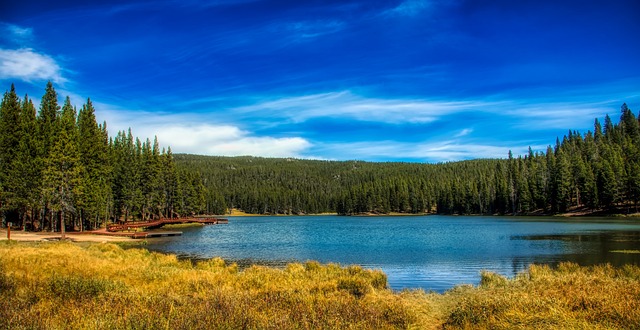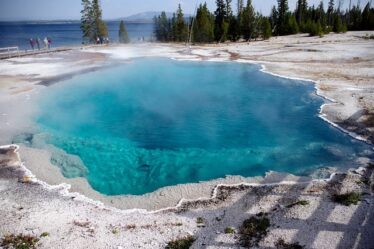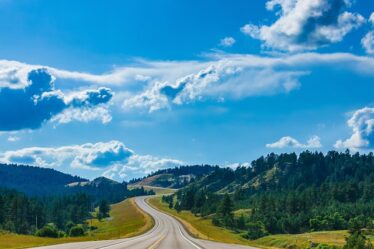
Medicine Bow National Forest, located in southeastern Wyoming, is a treasure trove of outdoor adventure and natural beauty. Spanning over 2.2 million acres, this vast expanse offers a diverse range of landscapes, from rugged mountains and dense forests to serene lakes and alpine meadows. Whether you’re an avid hiker, a wildlife enthusiast, or simply seeking a peaceful retreat in nature, Medicine Bow National Forest has something for everyone. This comprehensive guide explores the many attractions and activities that make this forest a must-visit destination.
Introduction to Medicine Bow National Forest
Medicine Bow National Forest, part of the Medicine Bow-Routt National Forests and Thunder Basin National Grassland, is named after the Medicine Bow Mountains, a prominent range within the forest. The forest’s diverse ecosystems support a wide variety of plant and animal species, making it a haven for nature lovers and outdoor enthusiasts.
Major Attractions
Snowy Range
The Snowy Range is one of the most striking features of Medicine Bow National Forest. This subrange of the Medicine Bow Mountains is renowned for its dramatic peaks, alpine lakes, and scenic byways. The Snowy Range Scenic Byway (Wyoming Highway 130) offers breathtaking views and easy access to numerous trails and campgrounds.
Medicine Bow Peak
Medicine Bow Peak, the highest point in the range at 12,013 feet, is a popular hiking destination. The trail to the summit offers panoramic views of the surrounding wilderness and is particularly beautiful during the summer months when wildflowers are in bloom.
Vedauwoo Recreation Area
Vedauwoo, located in the southeastern part of the forest, is known for its unique rock formations and excellent climbing opportunities. The area is popular with rock climbers, hikers, and campers. The Turtle Rock Trail is a family-friendly loop that provides an up-close look at the fascinating geology of Vedauwoo.
Encampment River
The Encampment River flows through the western part of Medicine Bow National Forest, offering excellent fishing and rafting opportunities. The Encampment River Trail follows the river for several miles, providing scenic views and access to pristine fishing spots.
Rob Roy Reservoir
Rob Roy Reservoir, located in the southeastern section of the forest, is a popular destination for boating, fishing, and camping. The reservoir is stocked with trout, making it a favorite spot for anglers. Several campgrounds and picnic areas are available around the reservoir.
Outdoor Activities
Hiking and Backpacking
Medicine Bow National Forest boasts an extensive network of trails that cater to hikers of all skill levels. Some popular trails include:
- Lakes Trail: This trail offers a relatively easy hike around several alpine lakes, providing stunning views of the Snowy Range.
- Lost Lake Trail: A moderate hike that takes you to a beautiful, secluded lake surrounded by dense forest.
- Shelf Lakes Trail: A challenging hike that rewards you with breathtaking views of high mountain lakes and rugged terrain.
Camping
With numerous campgrounds scattered throughout the forest, Medicine Bow National Forest is an ideal place for camping. Whether you prefer developed campgrounds with amenities or more primitive, backcountry sites, you’ll find a spot that suits your needs.
- Sugarloaf Campground: Located near Medicine Bow Peak, this campground offers stunning views and easy access to hiking trails.
- Tie City Campground: Situated in Vedauwoo, this campground is popular with rock climbers and offers close proximity to climbing routes and hiking trails.
Fishing
The forest’s many lakes, rivers, and streams provide ample opportunities for fishing. Popular fishing spots include:
- Mirror Lake: Known for its clear waters and abundant trout, Mirror Lake is a favorite among anglers.
- North Platte River: Flowing through the forest, the North Platte River offers excellent fly fishing for trout.
Wildlife Viewing
Medicine Bow National Forest is home to a diverse array of wildlife. Commonly sighted animals include elk, mule deer, black bears, and moose. Birdwatchers will also find plenty to see, with species such as bald eagles, ospreys, and various songbirds inhabiting the forest.
Winter Sports
During the winter months, Medicine Bow National Forest transforms into a playground for snow enthusiasts. Popular winter activities include:
- Snowshoeing and Cross-Country Skiing: The forest’s many trails provide excellent opportunities for snowshoeing and cross-country skiing.
- Snowmobiling: With miles of groomed trails, snowmobiling is a popular winter activity in the forest. The Snowy Range area is particularly well-suited for snowmobiling.
Conservation and Preservation
Medicine Bow National Forest is managed by the U.S. Forest Service, which works to balance recreational use with conservation and preservation efforts. Visitors are encouraged to practice Leave No Trace principles to help protect the forest’s natural beauty and wildlife.
Fire Safety
Fire safety is a top priority in Medicine Bow National Forest, particularly during the dry summer months. Visitors should always follow fire regulations, use designated fire rings, and fully extinguish campfires before leaving.
Wildlife Protection
Respecting wildlife is crucial when visiting the forest. Visitors should maintain a safe distance from animals, store food properly to avoid attracting wildlife, and follow guidelines for bear safety.
Practical Information
Getting There
Medicine Bow National Forest is easily accessible by car. Major highways, including I-80 and Highway 130, provide convenient access to various parts of the forest. The nearest major airport is in Cheyenne, Wyoming, about 75 miles from the forest.
Best Time to Visit
The best time to visit Medicine Bow National Forest depends on your preferred activities. Summer (June to August) offers the best weather for hiking, camping, and fishing. Fall (September to October) brings beautiful foliage and fewer crowds. Winter (December to March) is ideal for snow sports.
Permits and Fees
Most areas of the forest do not require permits for day use. However, some activities, such as fishing and camping in developed campgrounds, may require permits or fees. Visitors should check with the U.S. Forest Service for the latest information on permits and fees.
Accommodations
In addition to camping, there are several lodging options in nearby towns such as Laramie, Saratoga, and Encampment. These towns offer a range of accommodations, from budget motels to charming bed-and-breakfasts.
Conclusion
Medicine Bow National Forest is a remarkable destination that offers a wealth of outdoor activities and stunning natural beauty. Whether you’re seeking adventure or tranquility, you’ll find it in the rugged mountains, serene lakes, and dense forests of this Wyoming gem. Plan your visit to Medicine Bow National Forest and experience the timeless allure of one of America’s most captivating wilderness areas.


